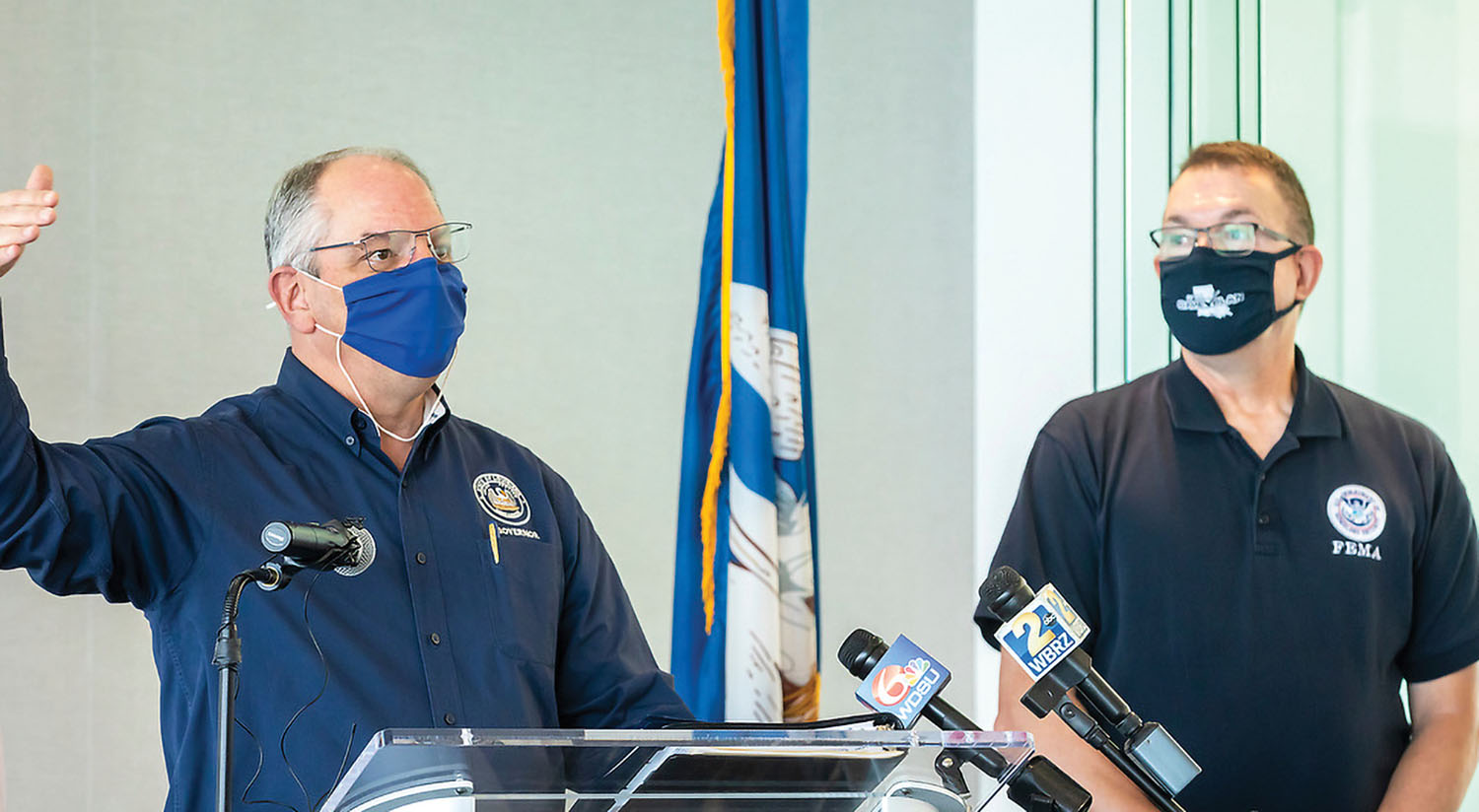Louisiana Gov. John Bel Edwards, along with representatives from the Port of New Orleans (Port NOLA), Louisiana Economic Development (LED) and The Water Institute of the Gulf, gathered in Baton Rouge July 13 to announce the launch of a “smart port initiative.” The initiative is designed to streamline operations and improve safety through the sharing of data in real time among port officials, tenants, shippers and providers of warehousing, cargo and ground transportation.
According to the partnership, the Water Institute of the Gulf will direct the technical side of the project, while Port NOLA is providing initial funding and serving as the pilot port for the project. LED will take the lead in pursuing federal infrastructure funding for the project. The three parties signed a cooperative endeavor agreement at The Water Campus, where the Water Institute is based.
“We’re excited to announce the smart port initiative of LED, the Water Institute of the Gulf and the Port of New Orleans, which will serve as a model for the future of maritime commerce in Louisiana,” Edwards said. “This project will provide better protection of our ports against threats and disruptions. It also will streamline operations for the port, its tenants and transportation partners. I’m proud of our joint efforts to raise the bar for innovation, emergency management and safety in Louisiana.”
“We want to thank Governor Edwards, Louisiana Economic Development and The Water Institute of the Gulf for their vision and partnership in making this smart port initiative a reality,” Port of New Orleans President and CEO Brandy Christian said. “As Louisiana’s international container port, Port NOLA is honored to participate in this innovative effort that boosts Louisiana’s maritime industry and competitiveness in global commerce. This collaborative endeavor is good news for all the Lower Mississippi River ports that rely on safe and efficient navigation of our working river.”
The first phase of the project will involve the Water Institute of the Gulf gathering data from sensors on harbor tugs and other vessels that navigate the Port of New Orleans. Sensors will track sediment in shallow areas of the river to promote safety, forecast shoaling and inform dredging decisions. The port will provide $125,000 to the Water Institute to cover the cost of the first phase.
According to the Water Institute, information gleaned from tugs and other vessels operating within the port’s district can be used in predictive modeling to anticipate dredging needs and ensure optimal berthing for vessels. Because the data system will use existing sensors, it could be applied to other ports in Louisiana and elsewhere. The state’s Coastal Protection and Restoration Authority will also be able to use data to improve the management of Mississippi River sediment.
Phase 2 of the initiative will digitally connect container yards, road transporters, dock terminals, shipping lines, warehouses and cargo operators, providing seamless coordination of the port’s supply chain. The resultant “smart port” will function as a unified digital command at the Port of New Orleans and the Water Institute. That connectivity would boost predictability and coordination across the supply chain, use artificial intelligence platforms to optimize a port’s performance, enhance redundancy of services and improve security.
“Louisiana’s Lower Mississippi River ports make up the most significant maritime complex in the world,” LED Secretary Don Pierson said. “Beginning with New Orleans, we plan to make our ports safer and more efficient through a digitally connected infrastructure. Smart ports mean more efficient operations for all businesses, and they also provide security against virtual and physical threats. With the Water Institute’s expertise, we can design a smarter infrastructure that befits our world-class port system.”
Justin Ehrenwerth, president and CEO of the Water Institute, said the partnership will help build a more resilient and efficient port system for the future.
“Through this collaboration, we will develop innovative ways to help the Port of New Orleans operate even more effectively,” Ehrenwerth said. “Dynamic water levels, sedimentation and reduced visibility are major challenges for ports all along the Mississippi River and beyond. Leveraging existing technology and developing new predictive tools will allow us to address some of the most pressing challenges of today while anticipating those of tomorrow.”
Phase 3 of the initiative will apply data and modeling to prepare for and respond to coastal and inland flooding events. For that phase, the initiative would include a planned Hurricane and Flood Risk Center which would provide model data and support the Governor’s Office of Home Security and Emergency Preparedness, the Louisiana National Guard and other emergency managers.
Caption for photo: Gov. John Bel Edwards and FEMA Administrator Pete Gaynor speak at a news conference July 13 announcing a smart port initiative between the Water Institute of the Gulf, Louisiana Economic Development and the Port of New Orleans. (Photo courtesy of the Water Institute of the Gulf)




